
Watch short for this article (5 slides)
Beyond Sunshine and Raindrops: Unpacking the Deep Connection Between Weather, Mood, and Personality
Do you feel an undeniable lift in spirits when the sun breaks through the clouds? Or perhaps a profound sense of calm descends upon you with the gentle patter of rain? Many of us notice a connection between the day's weather and our internal state, but this relationship is far more complex and individualized than simple preferences. Emerging research and established psychological principles suggest our affinity for certain weather patterns is intricately woven with our biological responses, psychological makeup, learned associations, and even our deep-seated personal history. Let's move beyond surface-level assumptions and explore the fascinating, scientifically-informed interplay between weather and the human experience.
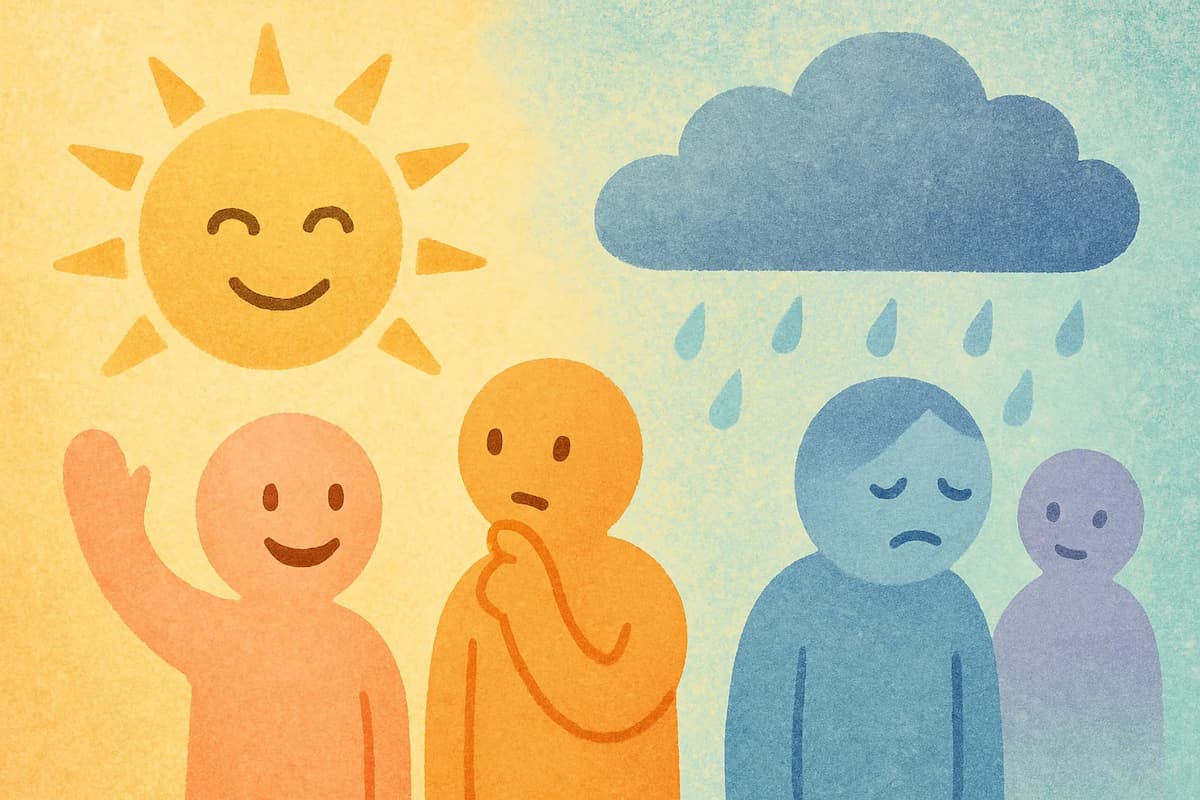
While the notion that "sunshine makes you happy" is common, the reality involves a sophisticated mix of physiological processes, cognitive interpretations, and environmental conditioning. Understanding why you might crave a crisp autumn day or find solace in a thunderstorm requires looking deeper.
The Biological Underpinnings: How Weather Physically Influences Us
Our bodies are surprisingly attuned to atmospheric changes. These are not just subjective feelings; measurable physiological responses occur:
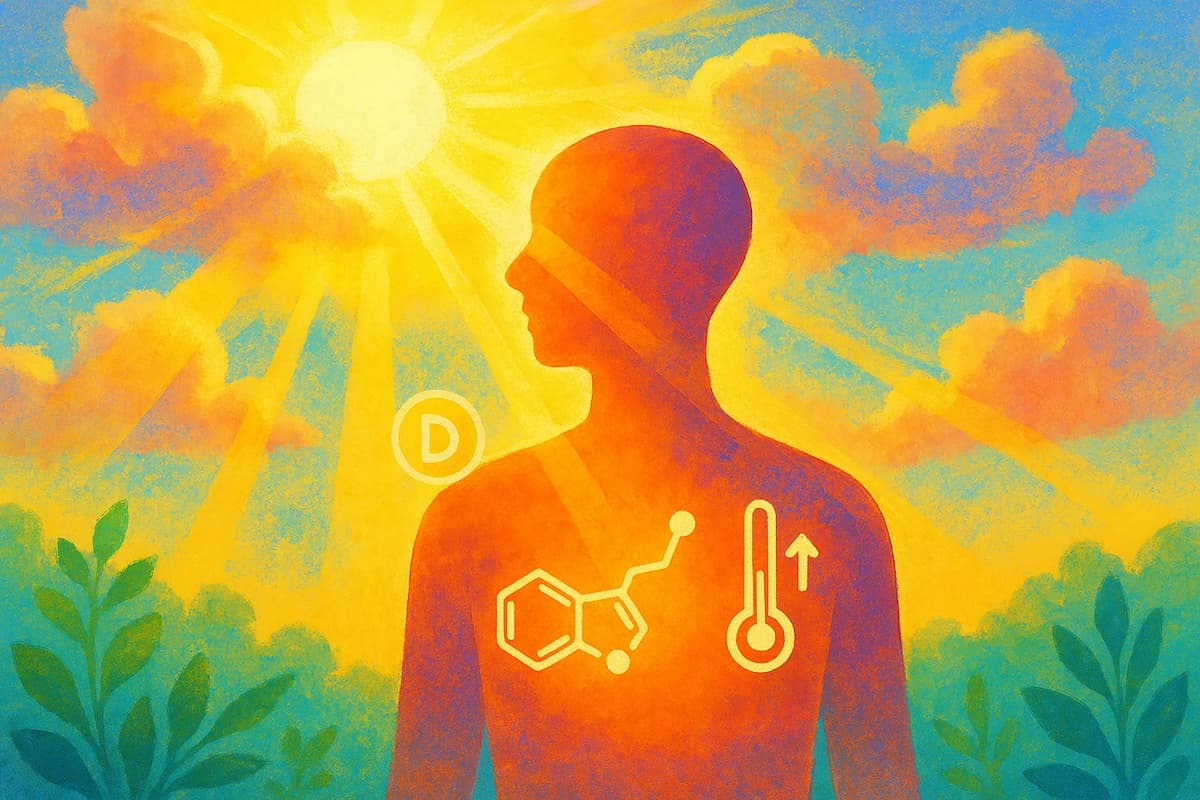
- Sunlight, Serotonin, and Vitamin D: Exposure to sunlight, particularly the UVB rays, triggers Vitamin D synthesis in the skin. Vitamin D plays a crucial role in numerous bodily functions, including mood regulation. Studies suggest a link between low Vitamin D levels and depressive symptoms. Furthermore, sunlight exposure influences the production of serotonin, a neurotransmitter strongly associated with feelings of well-being and happiness. Brighter light can also suppress melatonin production, helping regulate our circadian rhythms (our internal body clock), leading to increased alertness and energy during daylight hours. (Source: NIH - Serotonin and Sunlight; Source: NIH - Vitamin D and Depression)
- Barometric Pressure and Humidity: Changes in atmospheric pressure, particularly drops preceding storms, are anecdotally and sometimes clinically linked to changes in mood, headaches, and joint pain, especially in individuals with arthritis. While direct causation on mood for the general population is less definitive than sunlight, these physical sensations can indirectly impact emotional state. High humidity can increase feelings of lethargy and discomfort for some.
- Temperature's Cognitive Impact: Temperature extremes can affect focus and energy. While excessive heat often leads to fatigue and irritability, studies have suggested that slightly cooler temperatures (around 68-72°F or 20-22°C) might enhance cognitive performance and concentration for certain tasks. Conversely, extreme cold requires the body to expend significant energy to stay warm, which can be mentally taxing.
- Rain, Storms, and Negative Ions?: The air composition changes during and after rainstorms, with an increase in negative ions. Some research, though debated and not universally accepted, suggests negative ions might have mood-boosting effects similar to antidepressants for some individuals. Additionally, the sound of steady rain can act as 'pink noise' (similar to white noise but with reduced high frequencies), which some find calming and conducive to sleep or focus. (Source: WebMD - Negative Ions Overview)
Psychological Dimensions: Personality, Perception, and Learned Responses
Our internal landscape significantly shapes how we experience external weather conditions:
Personality Traits and Weather Preferences: Moving Beyond Simple Labels
While early ideas linked specific traits directly to weather types (e.g., extroverts = sun, introverts = rain), the reality is more nuanced:
- Extroversion/Introversion: It's less about the weather itself and more about the opportunities it affords. Extroverts might favor sunny weather for the increased potential for social gatherings, outdoor activities, and group events. However, an extrovert might equally enjoy a snowy day for group skiing or a cozy indoor party during a rainstorm. Introverts might appreciate rainy or snowy days for the societal acceptance of staying indoors, pursuing solitary hobbies (reading, writing, crafting), and engaging in deep thought without feeling pressured to be sociable. Yet, an introvert might also deeply enjoy a quiet, solitary walk on a sunny beach or a peaceful hike in crisp autumn air.
- Openness to Experience: Individuals high in this trait might appreciate the variety of weather, enjoying the unique beauty and sensory experience of a foggy morning, a dramatic thunderstorm, or the first snowfall. They may be less likely to have a single strong preference and more likely to find value in different atmospheric conditions.
- Neuroticism and Weather Sensitivity: Those higher in neuroticism may experience weather changes more intensely, potentially feeling increased anxiety during storms (astraphobia), heightened irritability in uncomfortable heat or humidity, or more pronounced mood dips during prolonged overcast periods. This highlights the concept of 'weather sensitivity' – a genuine variation in how significantly individuals are affected physiologically and psychologically by weather conditions.
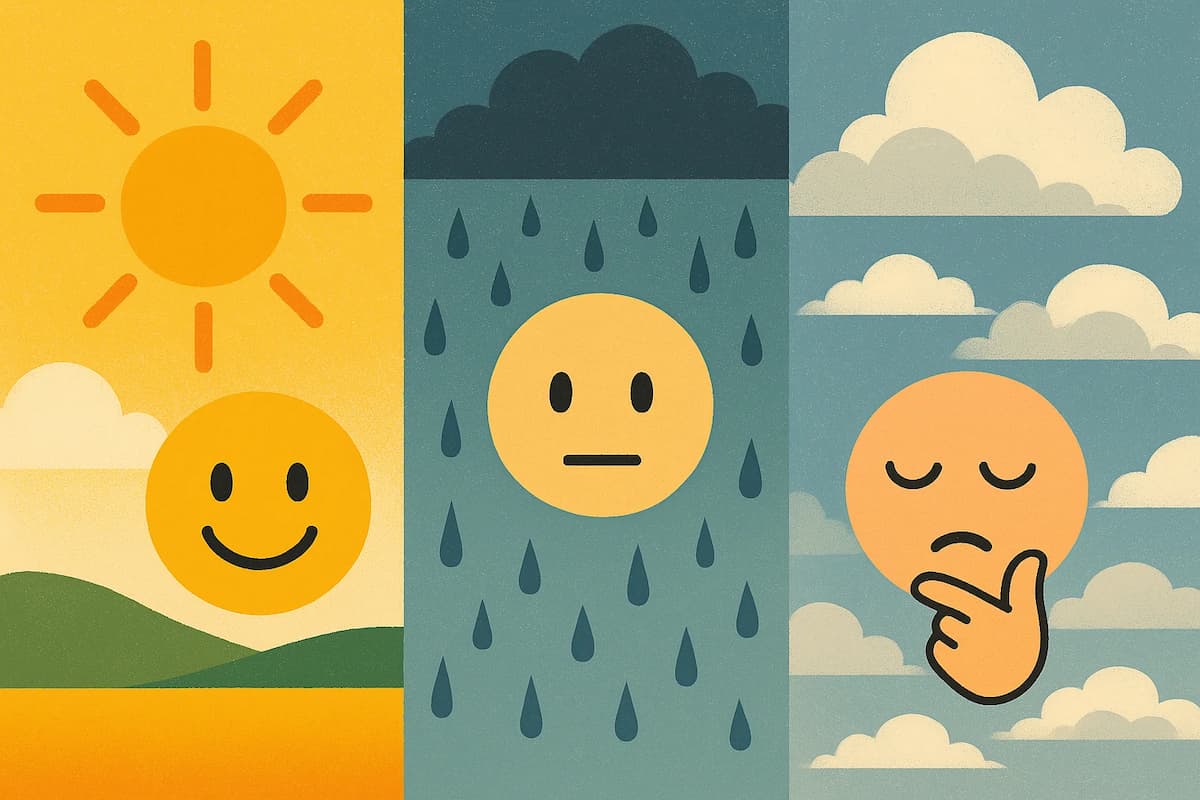
Cognitive Appraisal and Emotional Association
How we interpret weather matters immensely. Is rain "gloomy and depressing" or "cozy and cleansing"? Is snow "a beautiful blanket" or "a travel nightmare"? Our thoughts and labels directly influence our emotional response. These appraisals are often shaped by:
- Memory and Past Experiences: A childhood filled with joyful summer holidays builds positive associations with sunshine. Conversely, experiencing a frightening event during a thunderstorm (like damage to a home) can create lasting negative associations. These formative experiences powerfully shape our adult preferences.
- Cultural Context: In agricultural societies reliant on rainfall, rain is often celebrated as life-giving. In frequently overcast regions (like parts of the UK or Pacific Northwest), inhabitants might develop a cultural appreciation for indoor coziness ("Hygge" in Danish culture is a prime example) or learn to embrace outdoor activities regardless of drizzle.
The Power of Place: How Environment Shapes Preference
Where you grow up and live plays a significant role:
"The weather patterns we experience during formative years often become our baseline 'normal.' Significant deviations from this baseline, or strong positive/negative memories tied to specific weather events, can cement lifelong preferences or aversions." - Dr. Terra Verde, Environmental Psychologist
- Climate Adaptation: People living in chronically cold climates often develop robust coping mechanisms and cultural traditions centered around winter (e.g., winter sports, festivals, specific social gatherings), fostering appreciation. Similarly, those in hot climates adapt their lifestyles (siestas, lighter clothing, air conditioning reliance) and may feel uncomfortable or even distressed in cold they are unaccustomed to.
- Nostalgia and Identity: The scent after rain, the feel of the first crisp autumn air, or the specific quality of light during a regional weather phenomenon can trigger powerful feelings of nostalgia and belonging, reinforcing a preference for the familiar weather patterns of one's home or a cherished place.
Decoding Your Weather Preference: A More Nuanced View
Let's revisit common preferences with this deeper understanding:
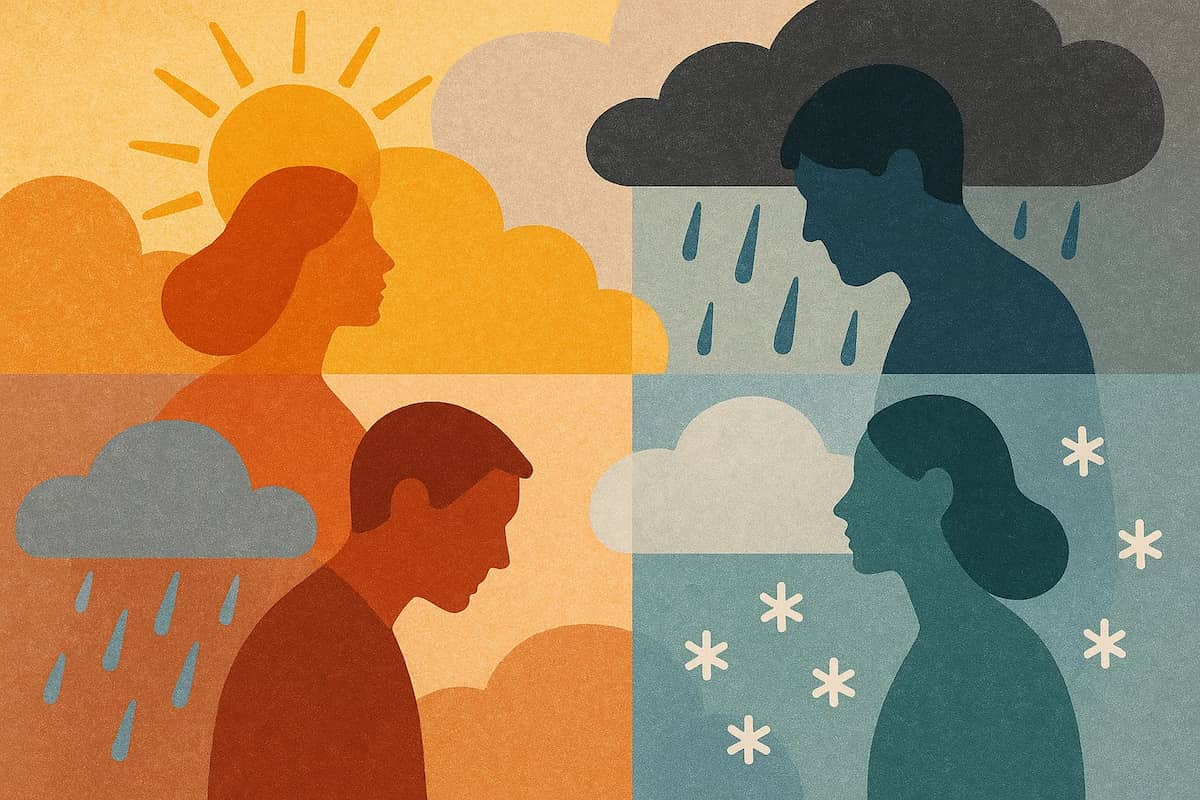
The Sunny Disposition Seeker
- Potential Drivers: Biological boost from Vitamin D and serotonin; alignment with circadian rhythms promoting energy; preference for outdoor activities and social opportunities; positive past associations with warmth and light.
- Nuance: Not exclusively extroverts. Introverts may seek sun for quiet outdoor solitude. Preference might be stronger in those prone to low moods or living in areas with limited winter sunlight.
The Rain Romantic and Overcast Observer
- Potential Drivers: Calming effect of steady sound ('pink noise'); reduced social pressure to be outdoors; conducive atmosphere for introspection, creativity, and focused tasks; appreciation for coziness (Hygge); potential (though debated) effect of negative ions; nostalgic associations.
- Nuance: Not solely introverts. Enjoyment might depend on the type of rain (gentle vs. torrential) and the context (a cozy weekend vs. a disrupted commute).
The Crisp Air & Cold Weather Connoisseur
- Potential Drivers: Improved cognitive focus in moderate cold; enjoyment of specific winter activities (skiing, ice skating, snowshoeing); appreciation for the stark beauty of winter landscapes; positive associations with holidays and traditions; resilience and enjoyment of bracing sensations.
- Nuance: Distinction between invigorating crisp autumn air and potentially challenging deep winter cold. Preference often tied to cultural background and access to appropriate gear/heating.
The Storm & Intensity Enthusiast
- Potential Drivers: High 'Openness to Experience' or 'Sensation Seeking' traits; fascination with nature's power and dynamics (sublime awe); enjoyment of dramatic sensory input (sound of thunder, sight of lightning); adrenaline response.
- Nuance: This often exists alongside practical caution. Appreciation is usually from a safe vantage point. May be linked to specific hobbies like storm photography or meteorology.
When Weather's Influence Becomes a Clinical Concern: SAD
For some, the link between weather (specifically lack of sunlight) and mood is a significant health issue known as Seasonal Affective Disorder (SAD). This is a type of depression that occurs during specific seasons, most commonly starting in late fall or early winter and resolving in spring or summer.
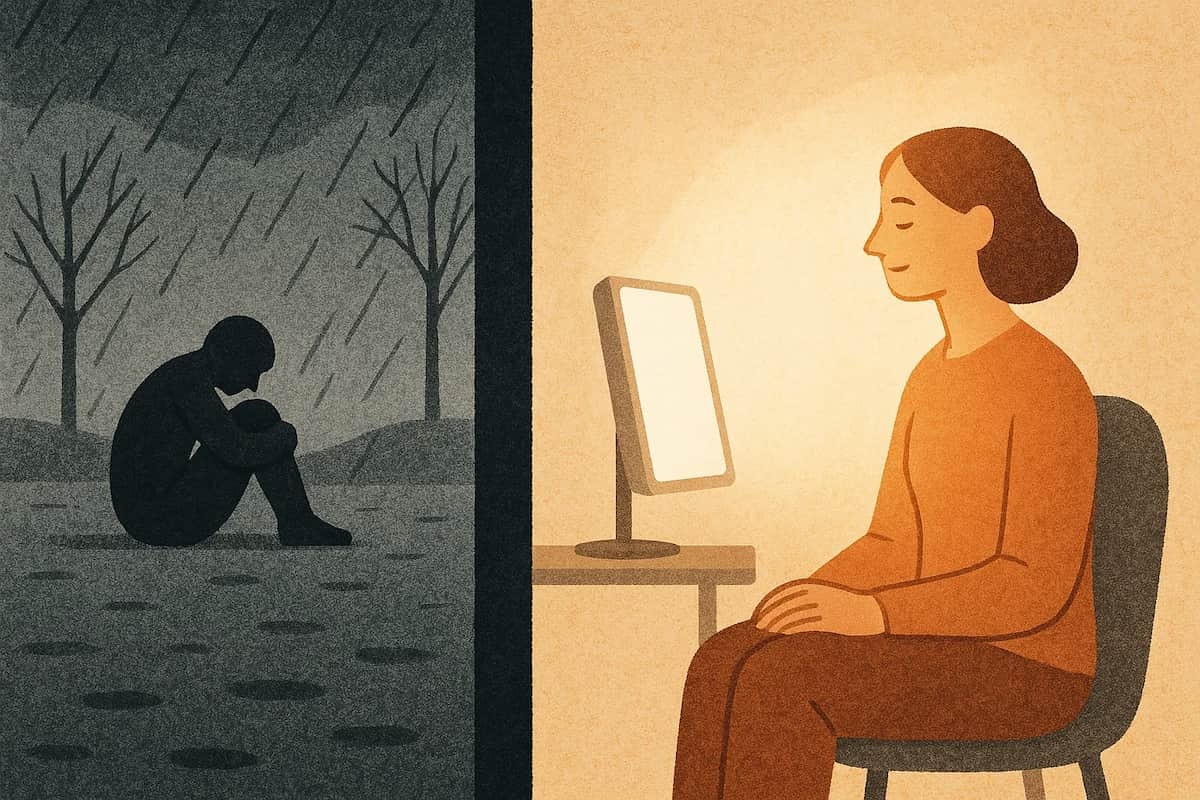
- Symptoms: Go beyond simple "winter blues" and include persistent low mood, loss of interest, changes in appetite (often craving carbohydrates), weight gain, hypersomnia (oversleeping), and low energy.
- Mechanism: Believed to be related to disruptions in circadian rhythms, reduced serotonin production, and potential imbalances in melatonin due to decreased sunlight exposure.
- Importance of Diagnosis: If you suspect you have SAD, it's crucial to consult a healthcare professional for proper diagnosis and treatment options, which may include light therapy (using a specific light box for around 30 minutes daily), psychotherapy, medication, or Vitamin D supplementation. (Source: National Institute of Mental Health - SAD; Source: Mayo Clinic - SAD)
Conclusion: Your Unique Weather Narrative
Your relationship with weather is a complex tapestry woven from threads of biology, psychology, personal history, and environment. While patterns exist – sunshine often correlates with elevated mood, and rain can foster introspection – individual responses vary immensely. Understanding the potential biological mechanisms (like serotonin and Vitamin D), psychological factors (personality, perception), and the power of past experiences provides a much richer picture than simple categorization.
So, the next time you find yourself reacting strongly to the weather forecast, take a moment to consider the deeper reasons. Are you responding to a biological need for sunlight? Is it triggering a cherished memory? Or does it simply provide the perfect backdrop for your preferred state of being? Recognizing this intricate connection allows for greater self-awareness and perhaps even a deeper appreciation for the ever-changing atmospheric dance around us.